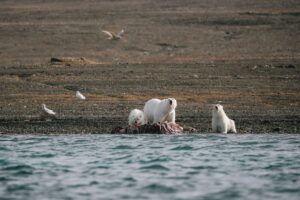I’ve made it no secret over the years that I love Rakiura/Stewart Island. It’s my happy place.
While we didn’t get off on the best footing (my first visit was when I discovered a pod of stranded pilot whales), it hasn’t deterred me. I love it here. There’s something special about New Zealand’s third island. It doesn’t boast the same mind-blowing scenery of the Alps or volcanoes up north. But there is a quiet beauty about Rakiura that only those discerning enough will see.
Its intense predator-free efforts combined with a lack of stoats and a lack of people means that Stewart Island feels pristine and untouched in a way that you don’t often find anymore. The birdsong around Oban is loud, and the dense native forests smell delicious, especially after it rains.
Stewart Island is definitely the underdog of New Zealand tourist spots.
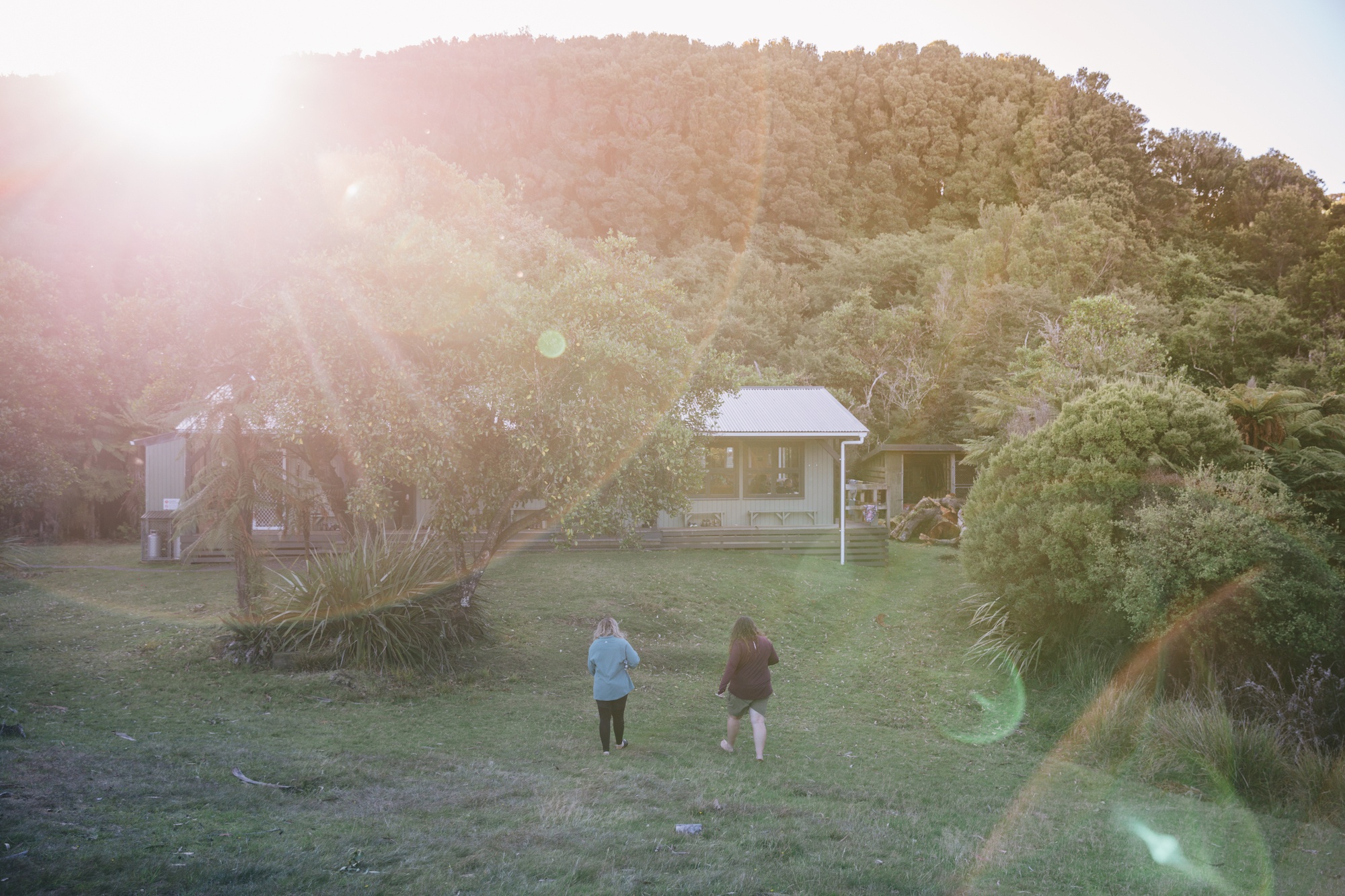
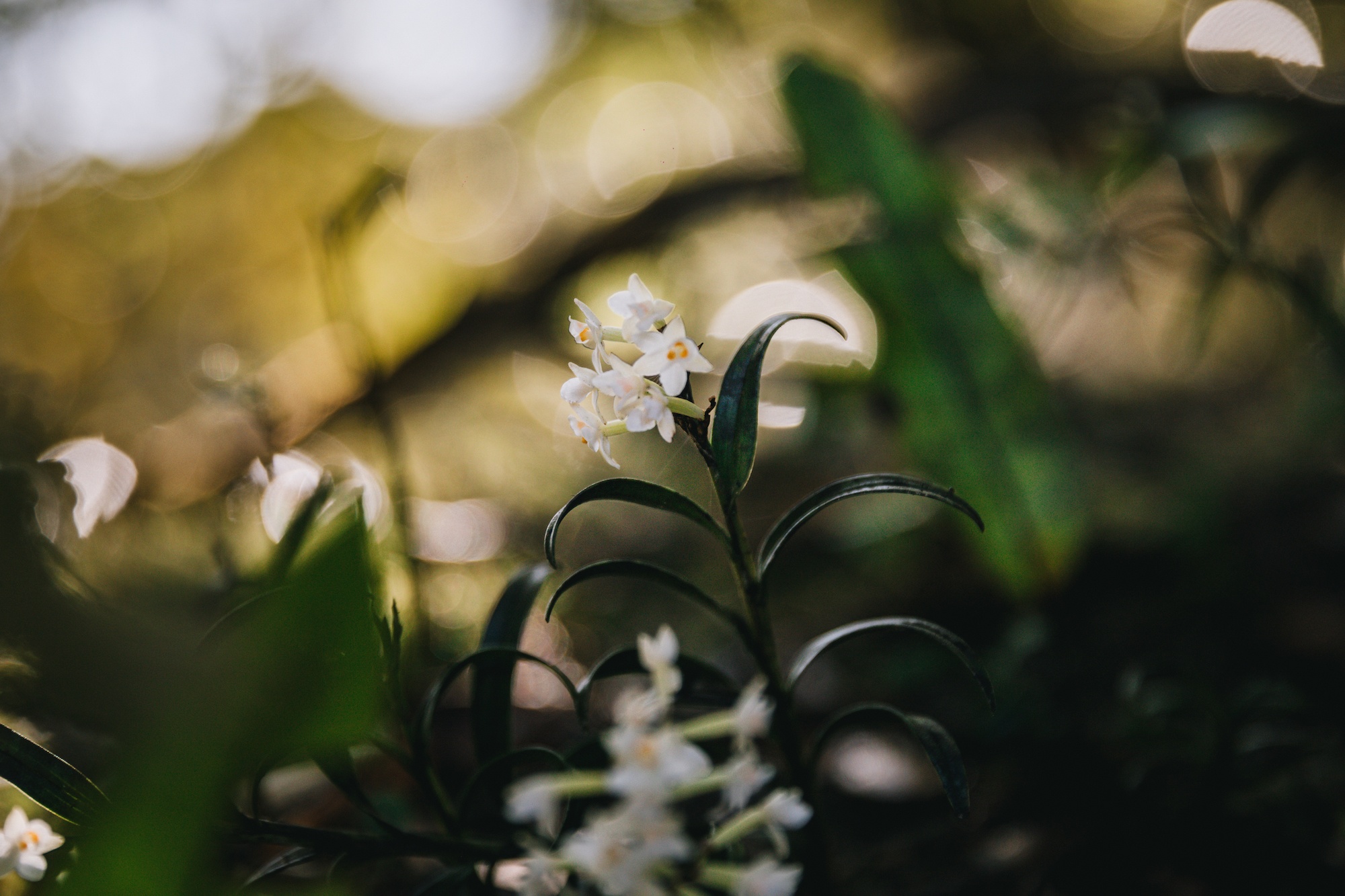
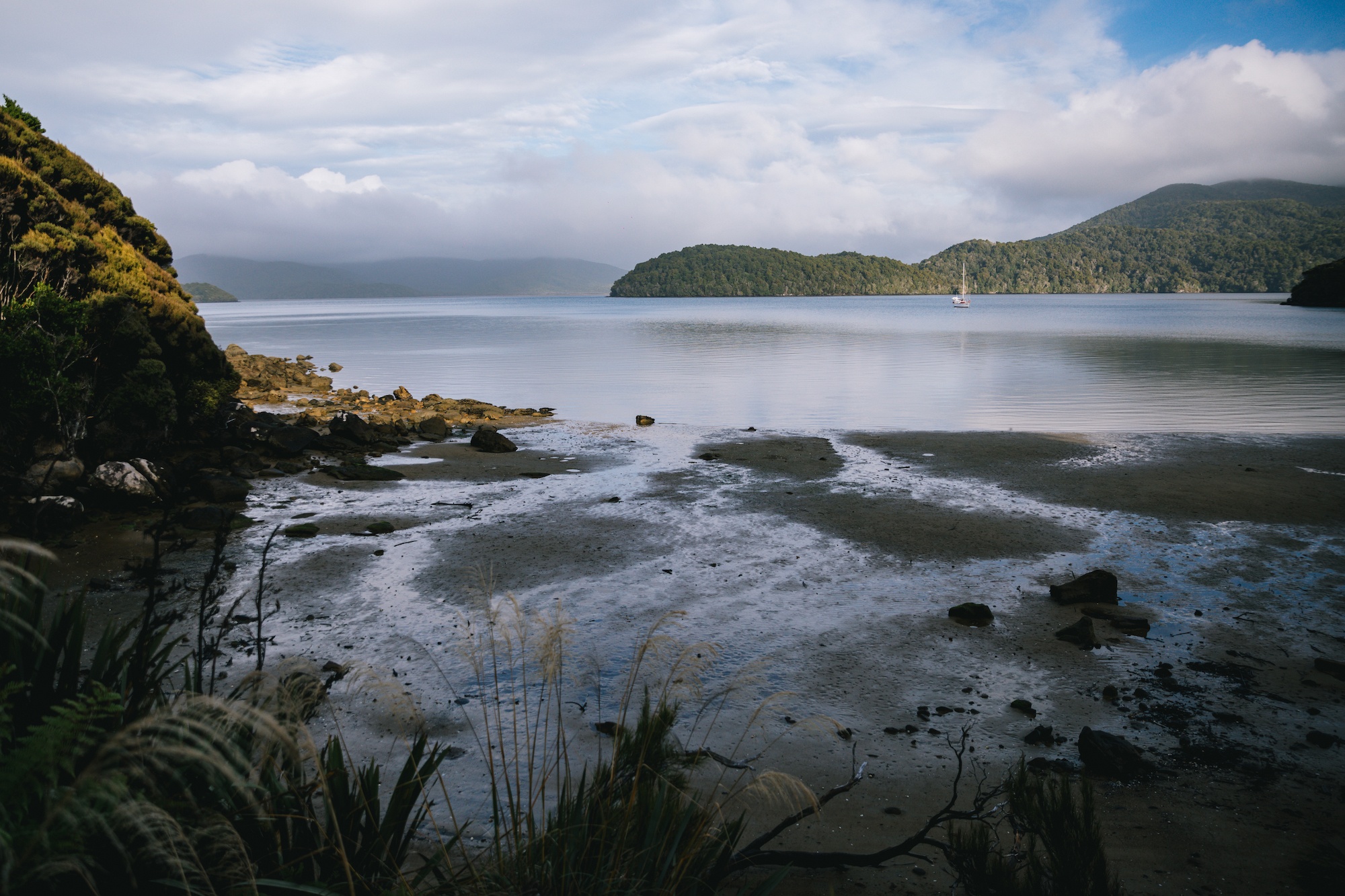
85% of Rakiura/Stewart Island is national park. Here, wilderness dominates, and weather defines your plan. Not particularly developed, there’s a handful of places to stay in Oban, pretty much the only populated place on the island. You often need to book far in advance and don’t expect anything super flash.
You can get to Stewart Island by an hour-long ferry or a 20-minute plane journey, both iconic experiences in and of themselves. I’ve done both a few times.
If you love wilderness, nature, birds, and peaceful places, Stewart Island is for you. Last autumn, I headed back with friends to walk the famous Rakiura Track over Easter, which is the beginning of autumn down under. Calm days, blue skies, and not-too-hot weather made it the perfect time of year to tug the tramping boots on and hit the trails.
The 32-kilometer track meanders along a beautiful coastline, through ancient native forests, and then back along Paterson Inlet, home to some historic relics. It’s a chill, relaxed track featuring New Zealand’s quiet beauty. It’s also a great way to potentially see kiwi (Rakiura tokoeka) in the wild. You need to book the huts online in advance.
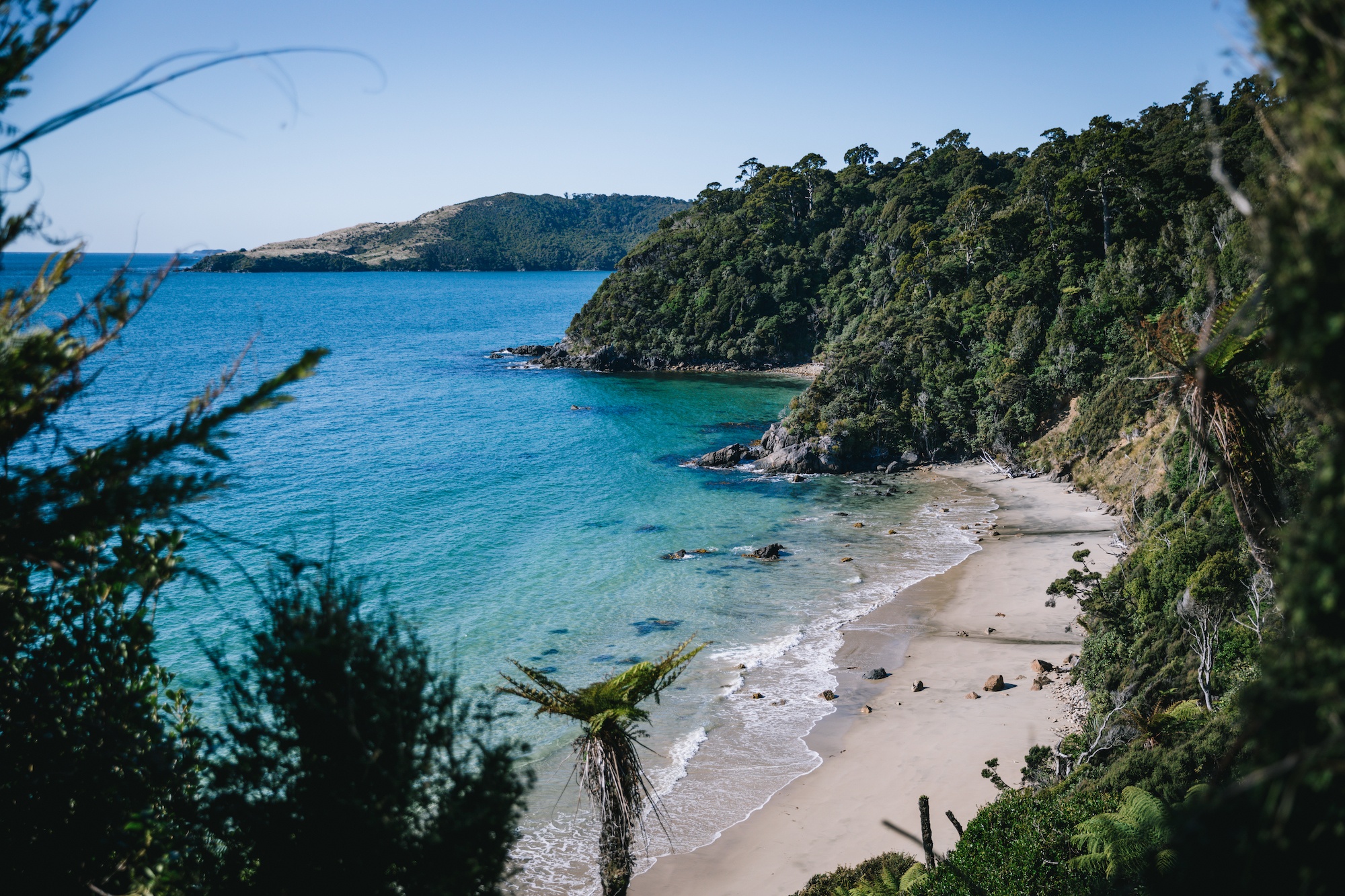
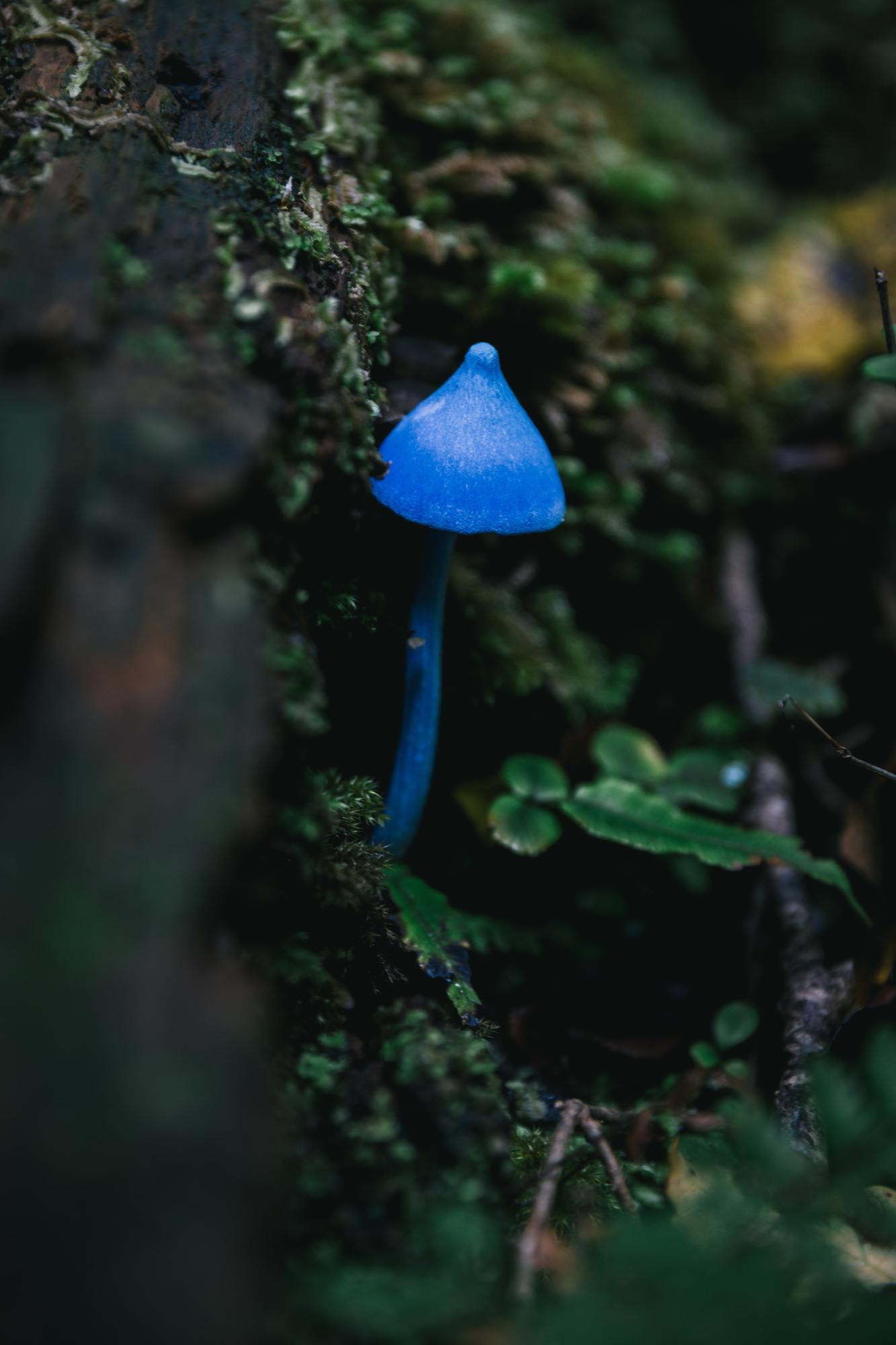
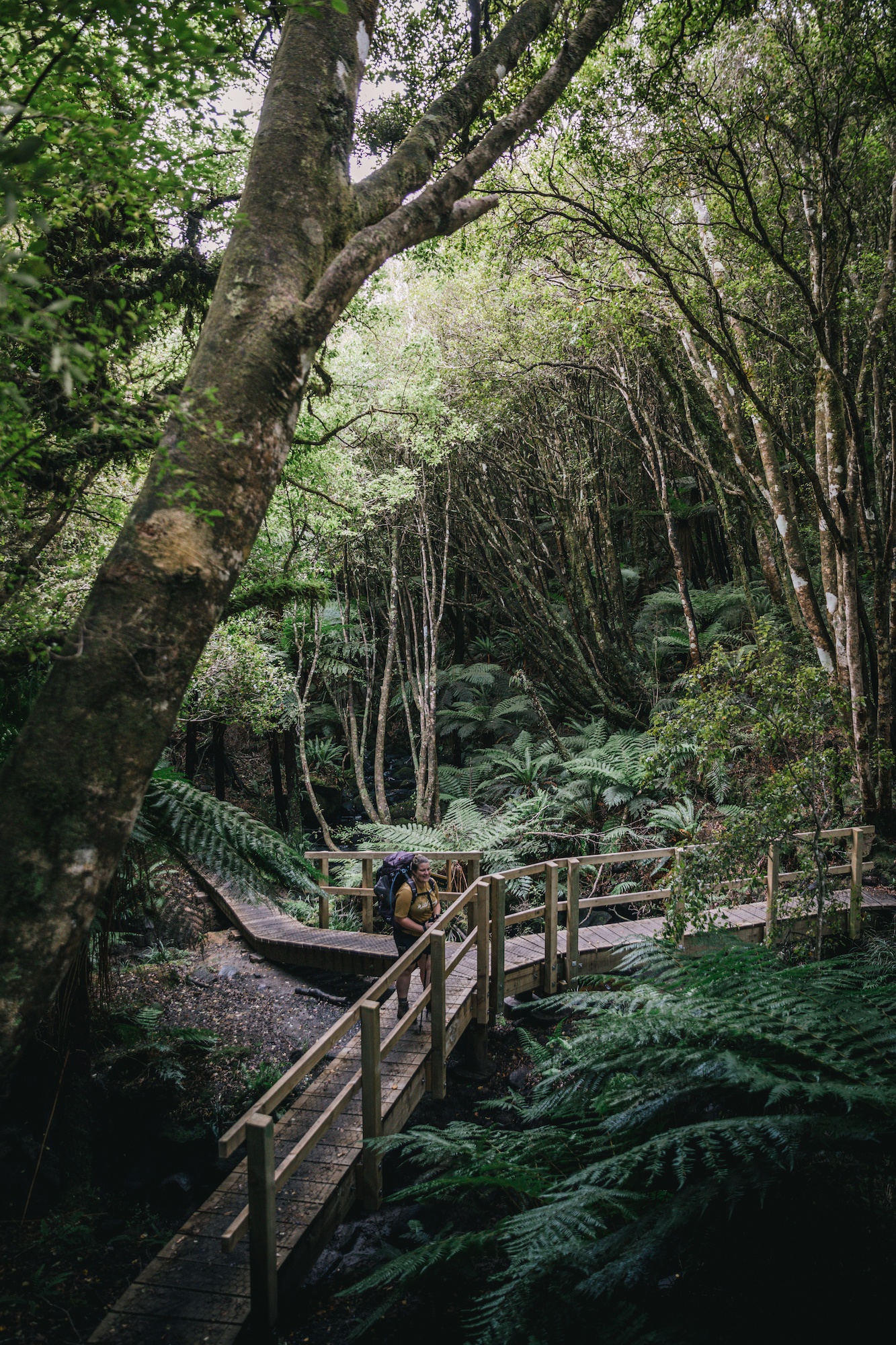
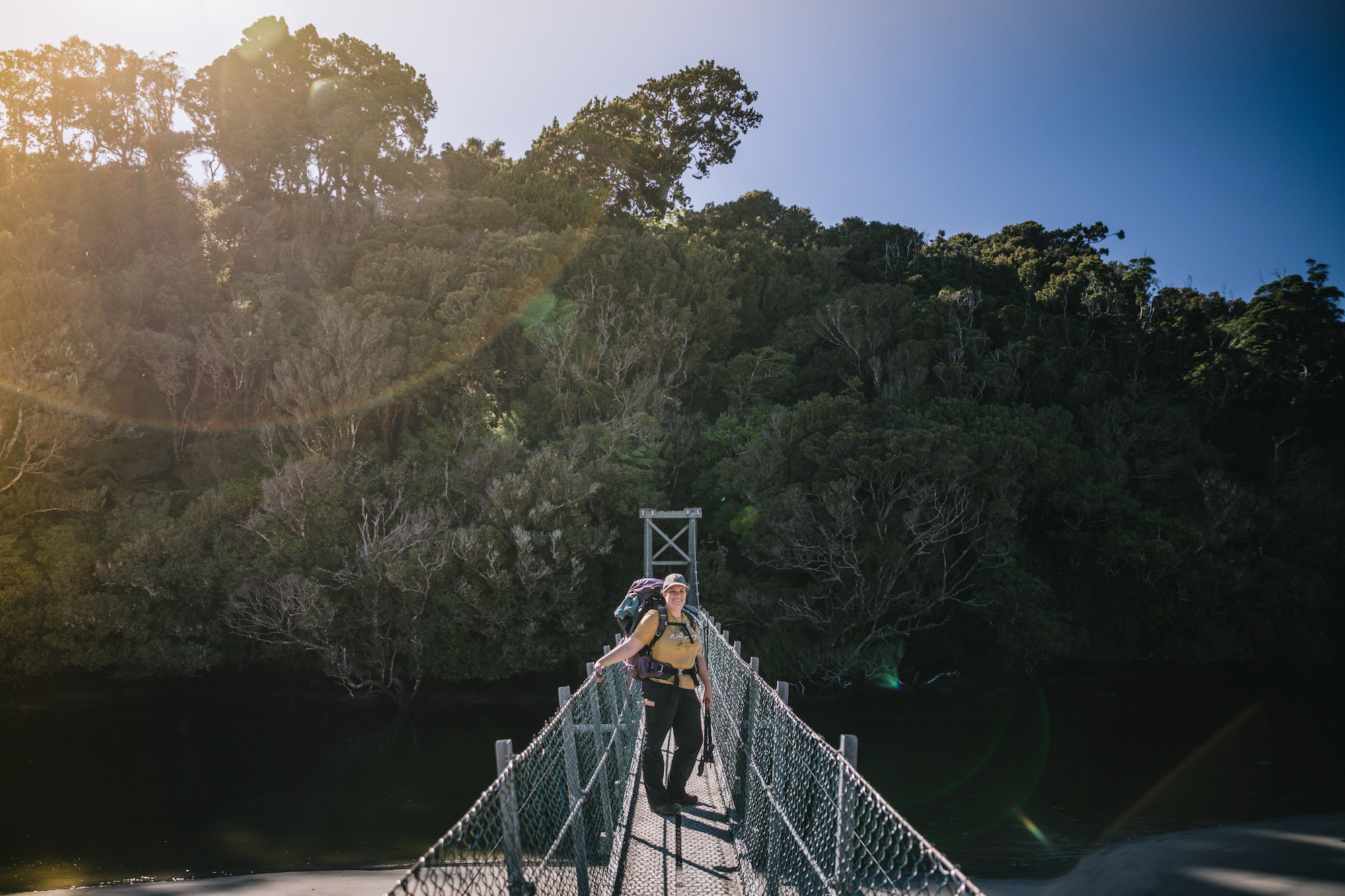
While I’ve been tramping in the more remote corners of Stewart Island, I’ve never actually done the Rakiura Track, one of New Zealand’s Great Walks.
A 32-kilometer loop track on the island’s eastern side, I’ve heard from many people that the Rakiura Track is one of the easiest multi-day walks in New Zealand. As someone who has tackled many tracks here in New Zealand over the years, I have to agree. Our Great Walks have better infrastructure than most other backcountry trails, making it a much more comfortable walk. No river crossings. No scary three-wire bridges. No using your hands to climb. Fancier huts.
But I also imagine that people say this because the track is mostly flat, and the days are shorter. I’m also implying it’s short because many other Great Walks have seven hours and 20-kilometer days.
I don’t think any section of the track is higher than 200 meters of elevation gain, which, let me tell you, is great. The only thing people tend to point out is that the track can get muddy; in fact, all the tracks on Stewart Island can get muddy. Just wear gaiters over your boots if you’re concerned. Otherwise, it’s just a bit of mud.
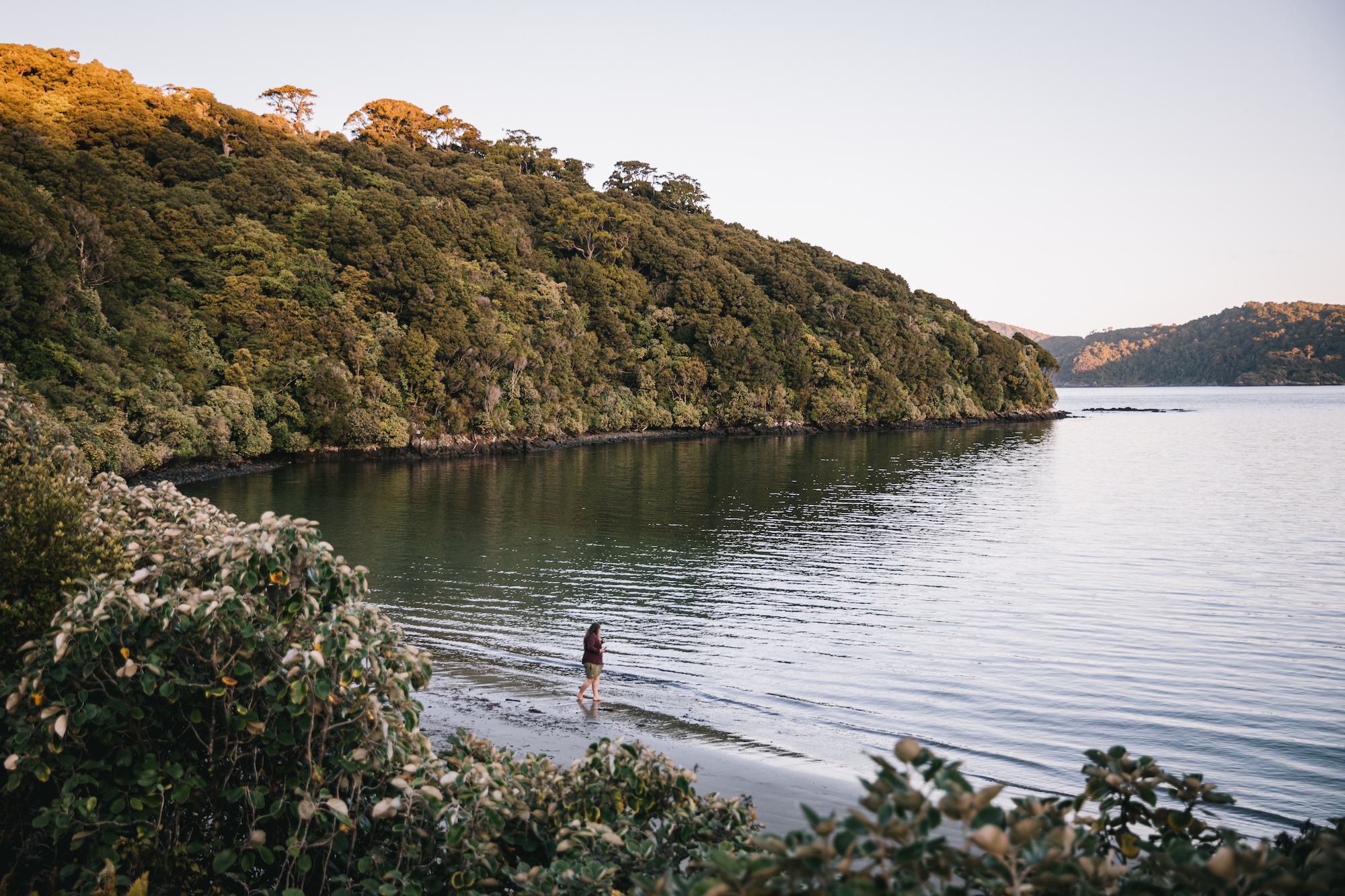
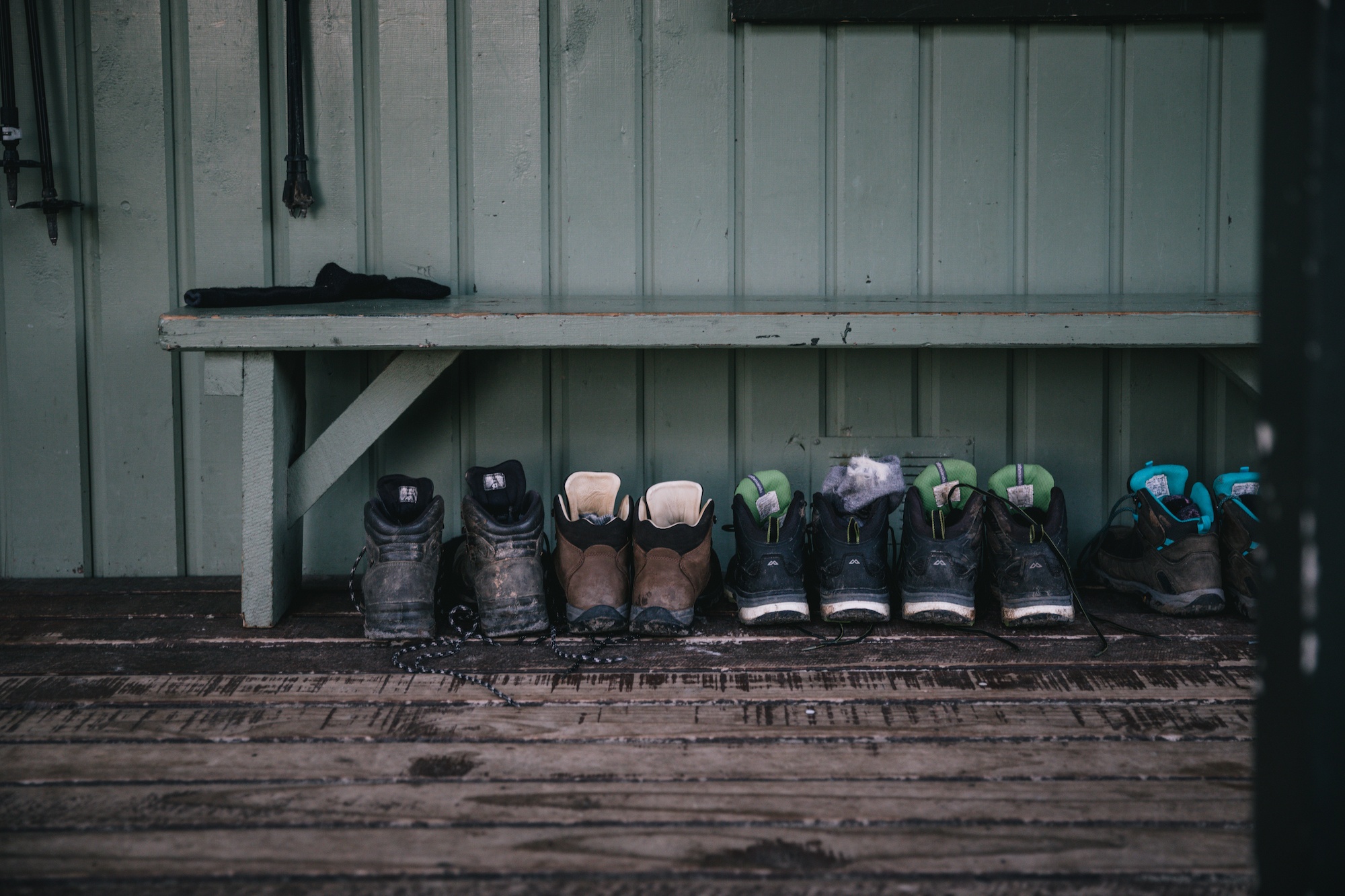
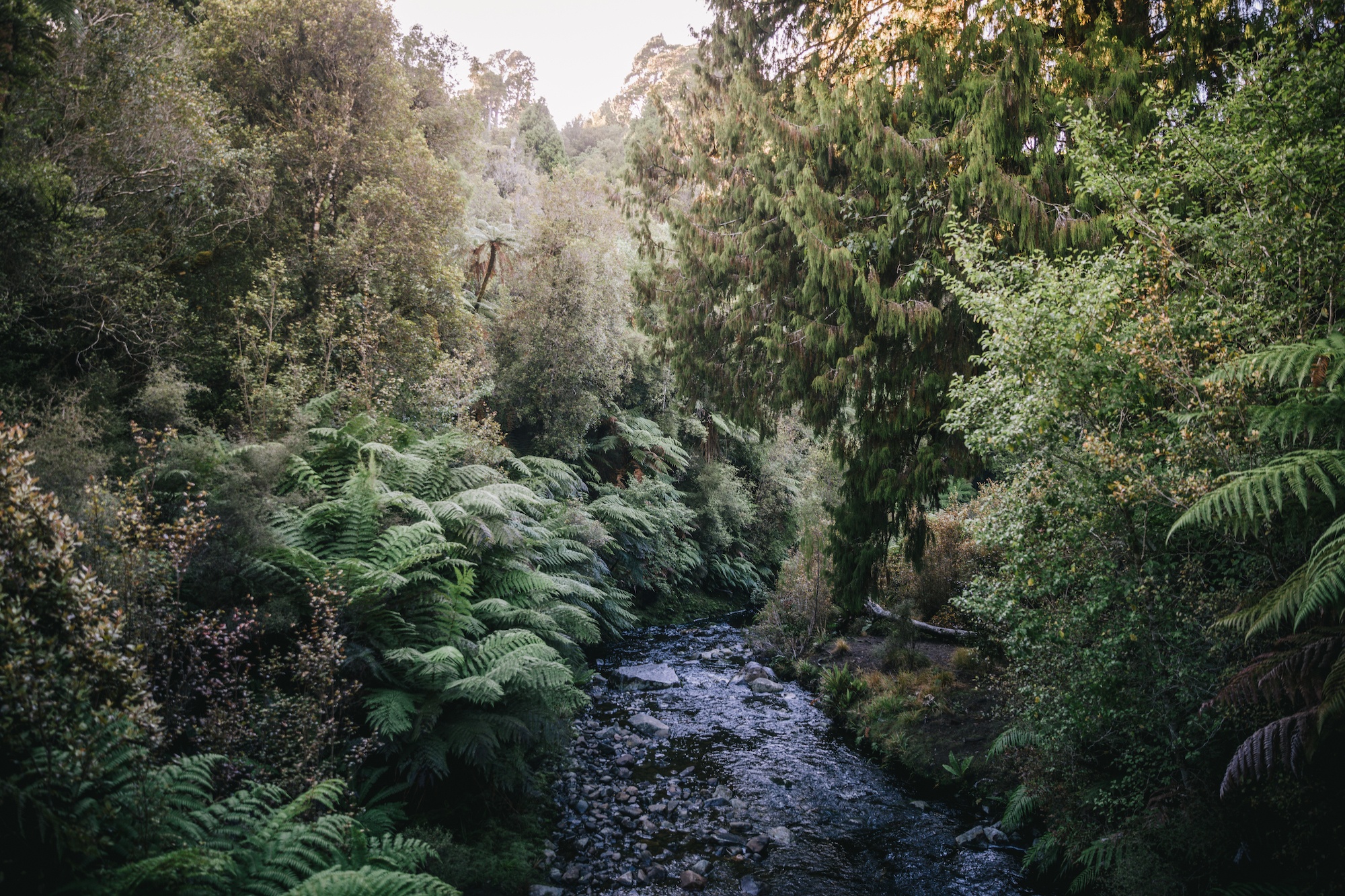
Another great thing about the Rakiura Track is that you can actually start and finish the track (close to) Oban. You don’t need to invest in complicated transport like on other tracks. In fact, you can walk to the start from town, which takes around 1.5 hours and extra five kilometres. You can also hitch a ride on a taxi to shorten the days. We walked the track counterclockwise, in the most common direction.
The first hut is Port William Hut. It’s only a three to four-hour walk from Lee Bay, where the track begins. You begin by passing along a huge chain statue marking the entrance to the national park, crafted by iconic artist Russell Beck. It signifies the anchoring of Maui’s waka (canoe) to Rakiura in the Māori traditional story. Its twin is across the Foveaux Strait in Bluff.
Just eight kilometers long, the walk along the coastline is spectacular, with white sandy beaches and inviting blue water, tempting for a swim. Just don’t expect it to be warm. Port William Hut sits alongside a beautiful beach/bay, and we lay out in the grass, warming ourselves in the sunshine for hours. It was magical.
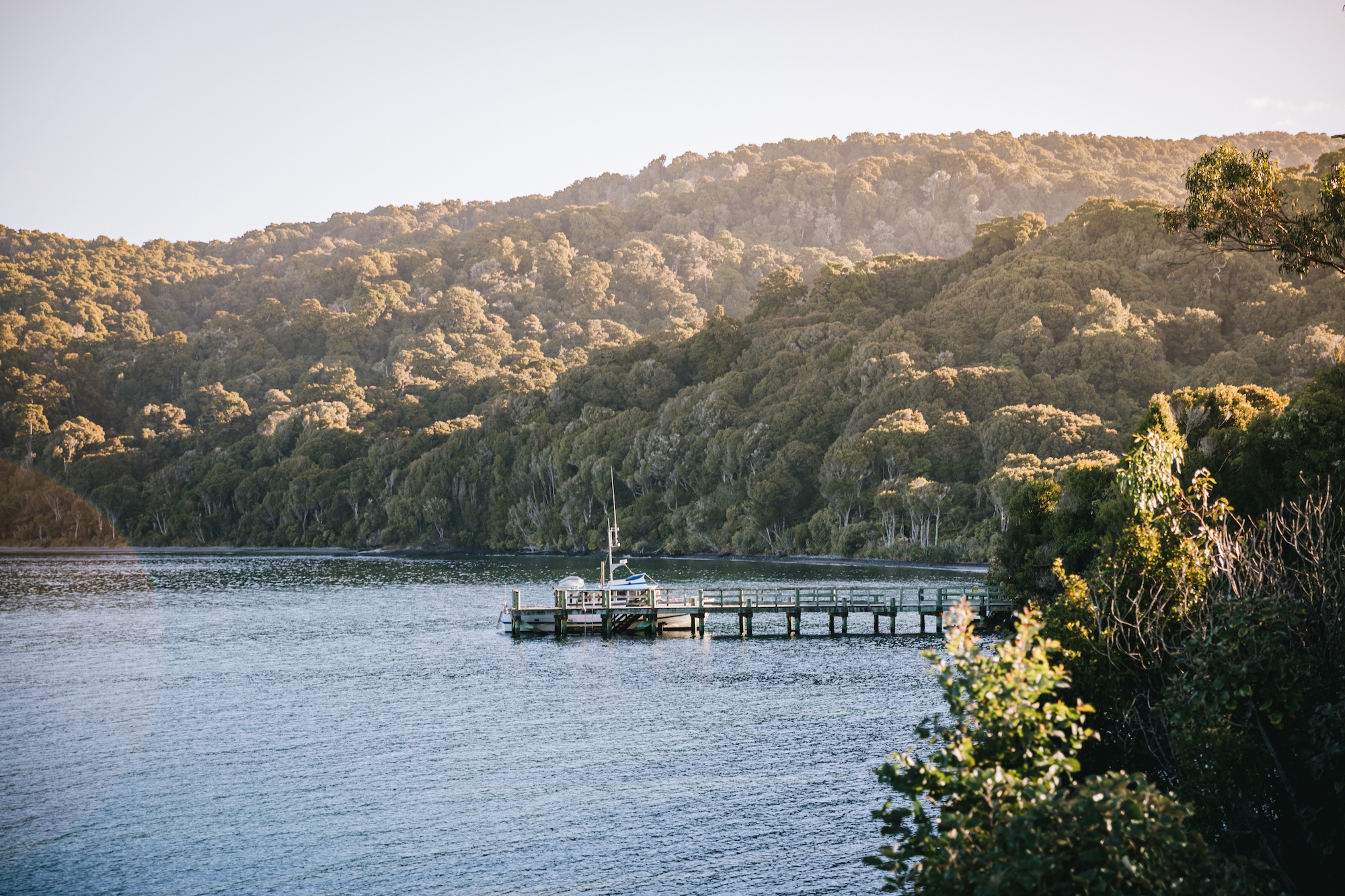
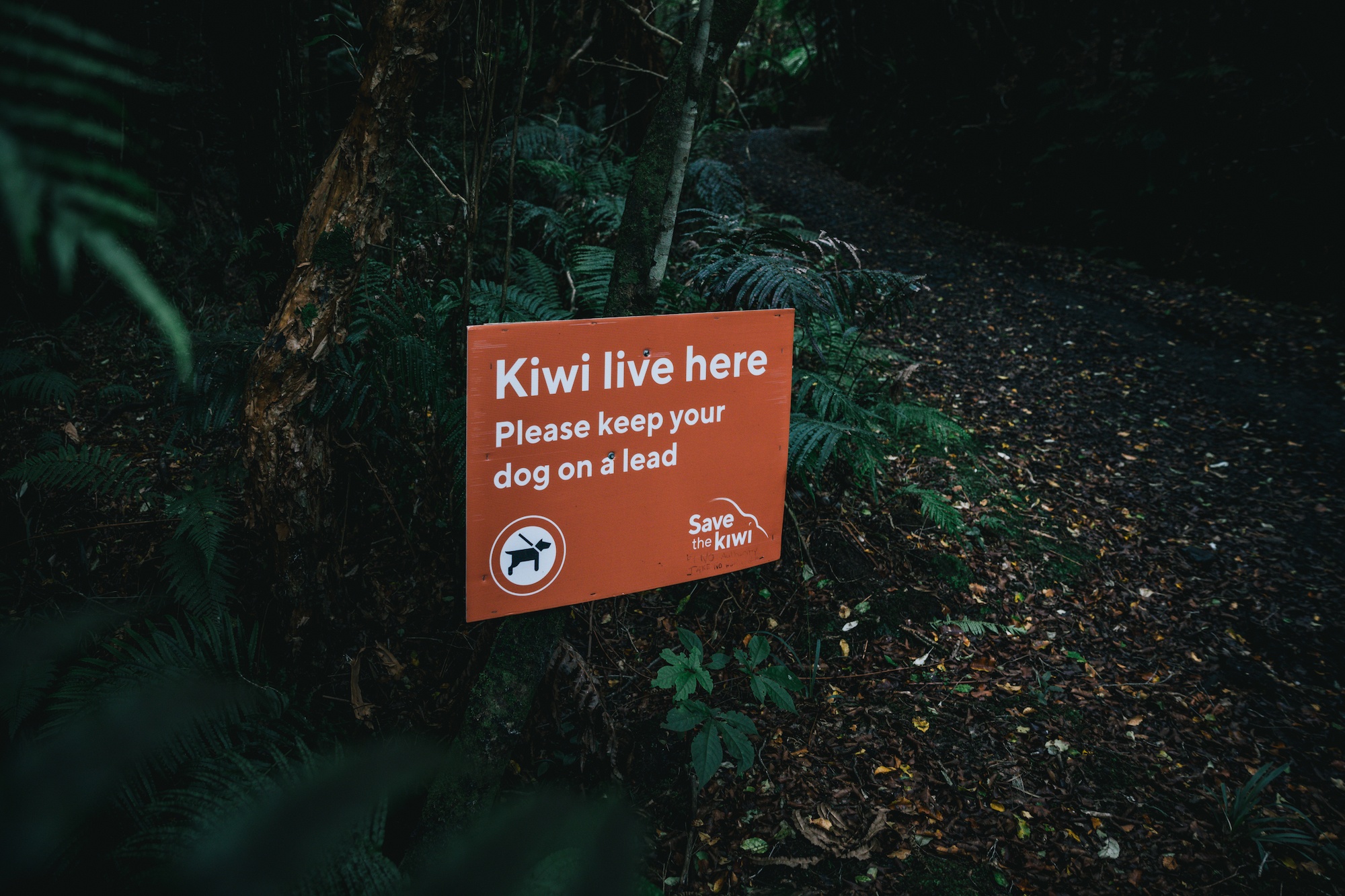
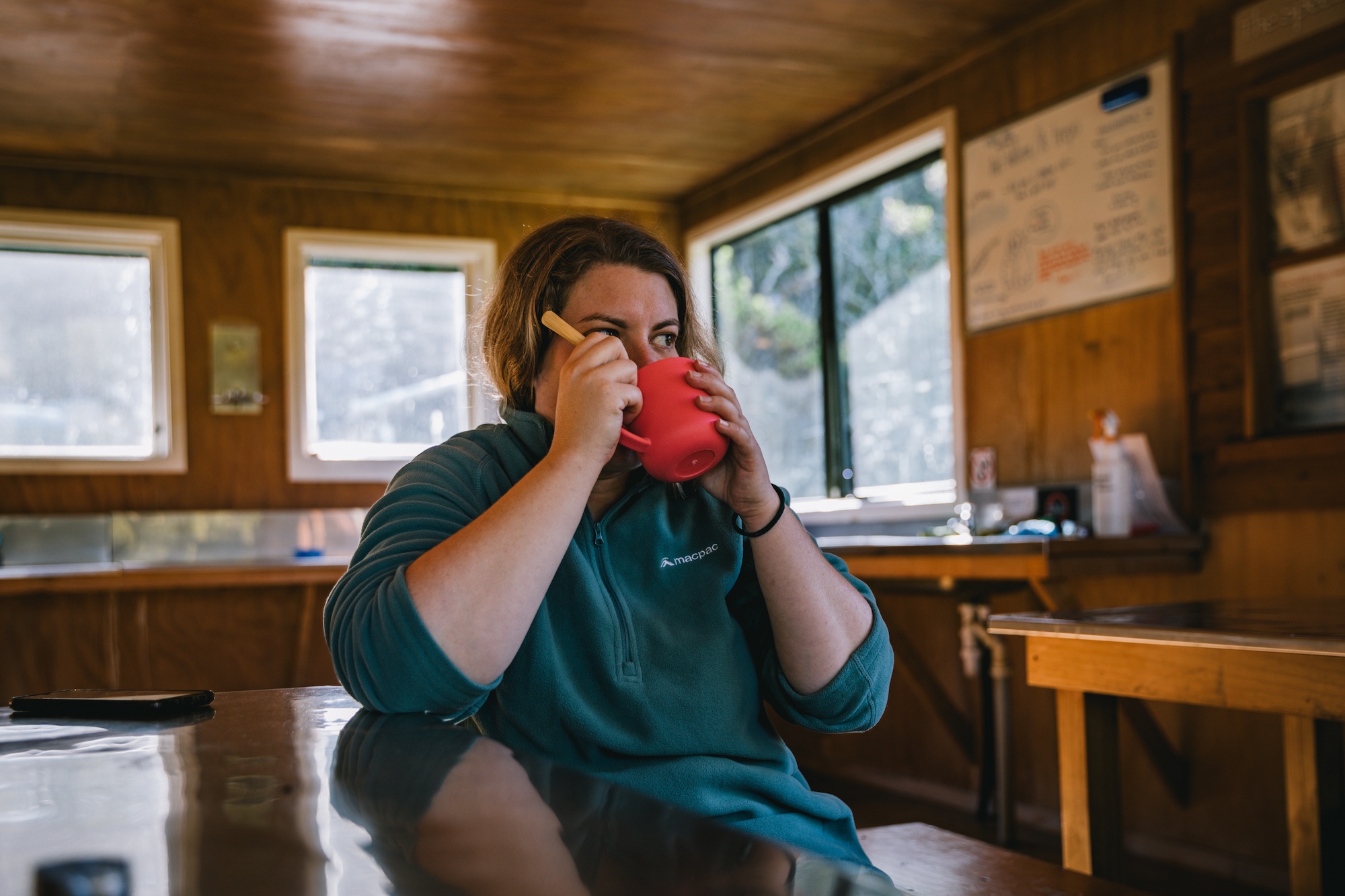
Day two of the Rakiura Track is the longest, clocking in at around 6 hours of walking along 13 kilometers. You have to backtrack along the track in the direction you came the day before for half an hour or so before branching off inland.
The forest is the real highlight, keeping eyes and ears out for kiwi and other rare native birds. This ancient podocarp forest smells divine and is a delightful place to wander. Historical milling activity can be seen along the track; it follows old tramlines used for transporting the milled trees.
We arrived at North Arm Hut in the afternoon. With plenty of time to lay out in the sunshine, we soaked up this magical place.
As someone who normally tramps alone, it was super nice to wander along with two friends with the same pace as me and who are even more excited about birds, perhaps less so with plants. I hate being rushed when hiking; I love to take things slowly and literally stop to listen to birdsong or smell the flowers. I will always encourage slow tramping – I’ve had so many incredible experiences slowing down that others have missed.
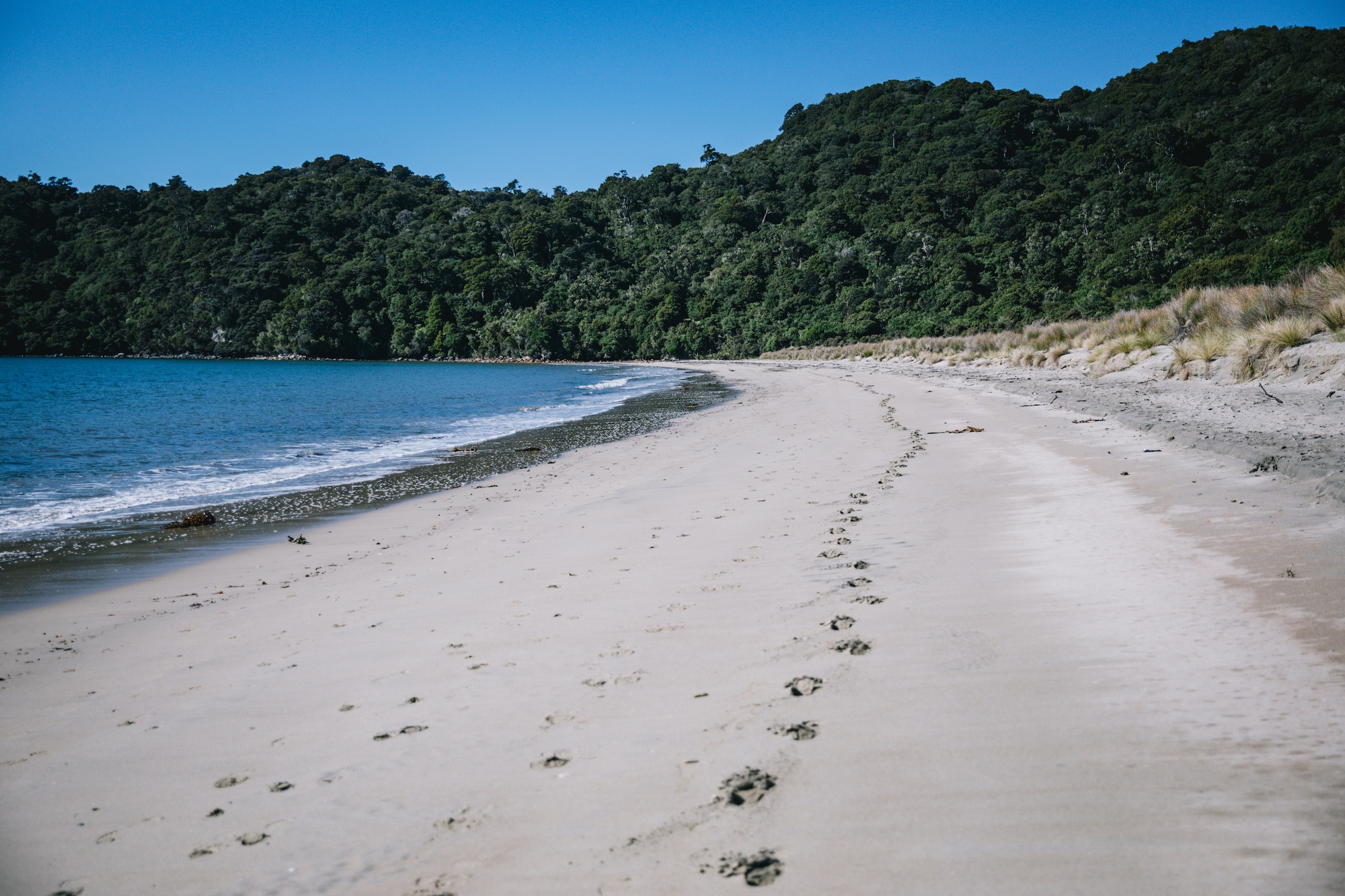
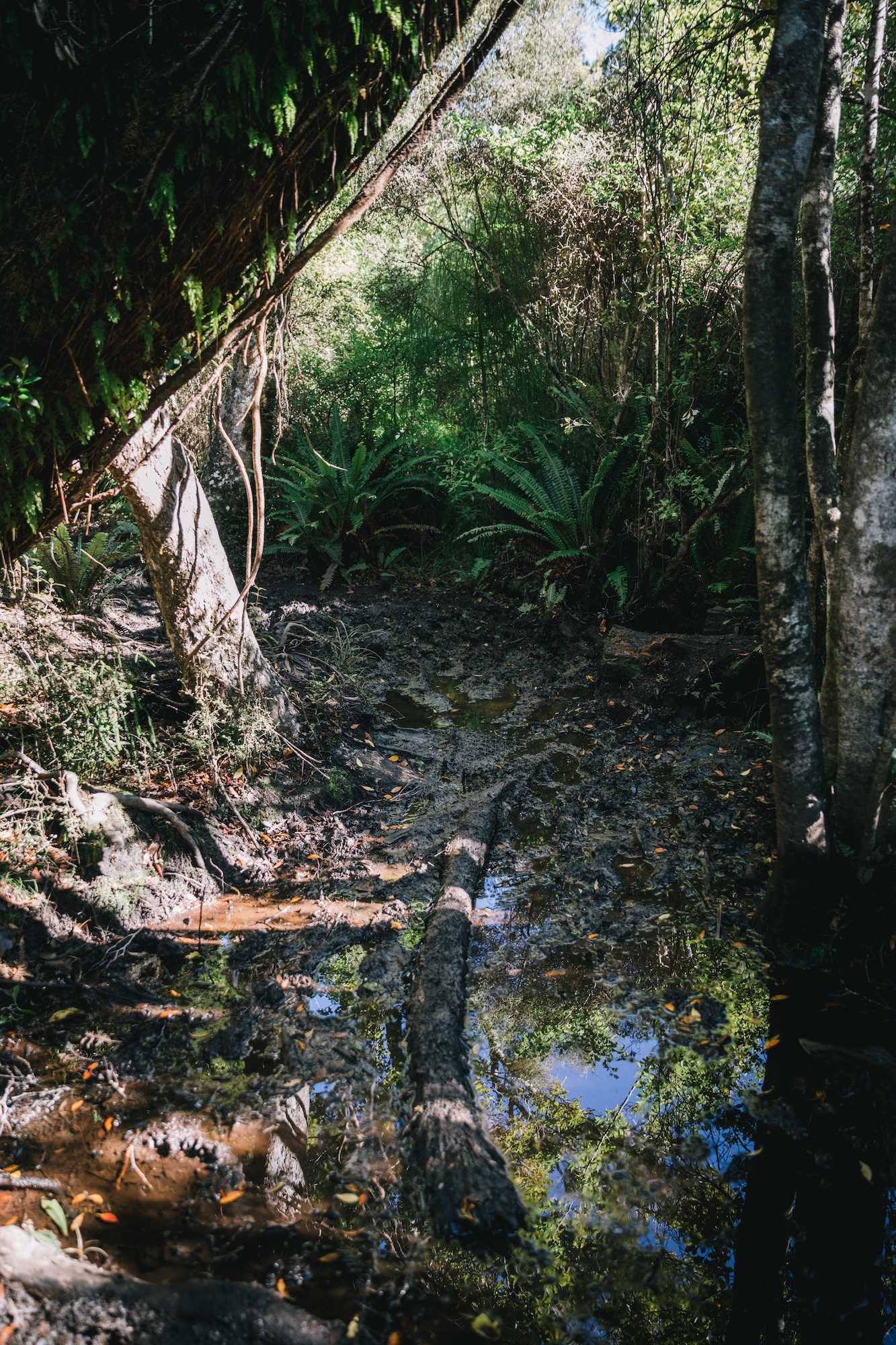
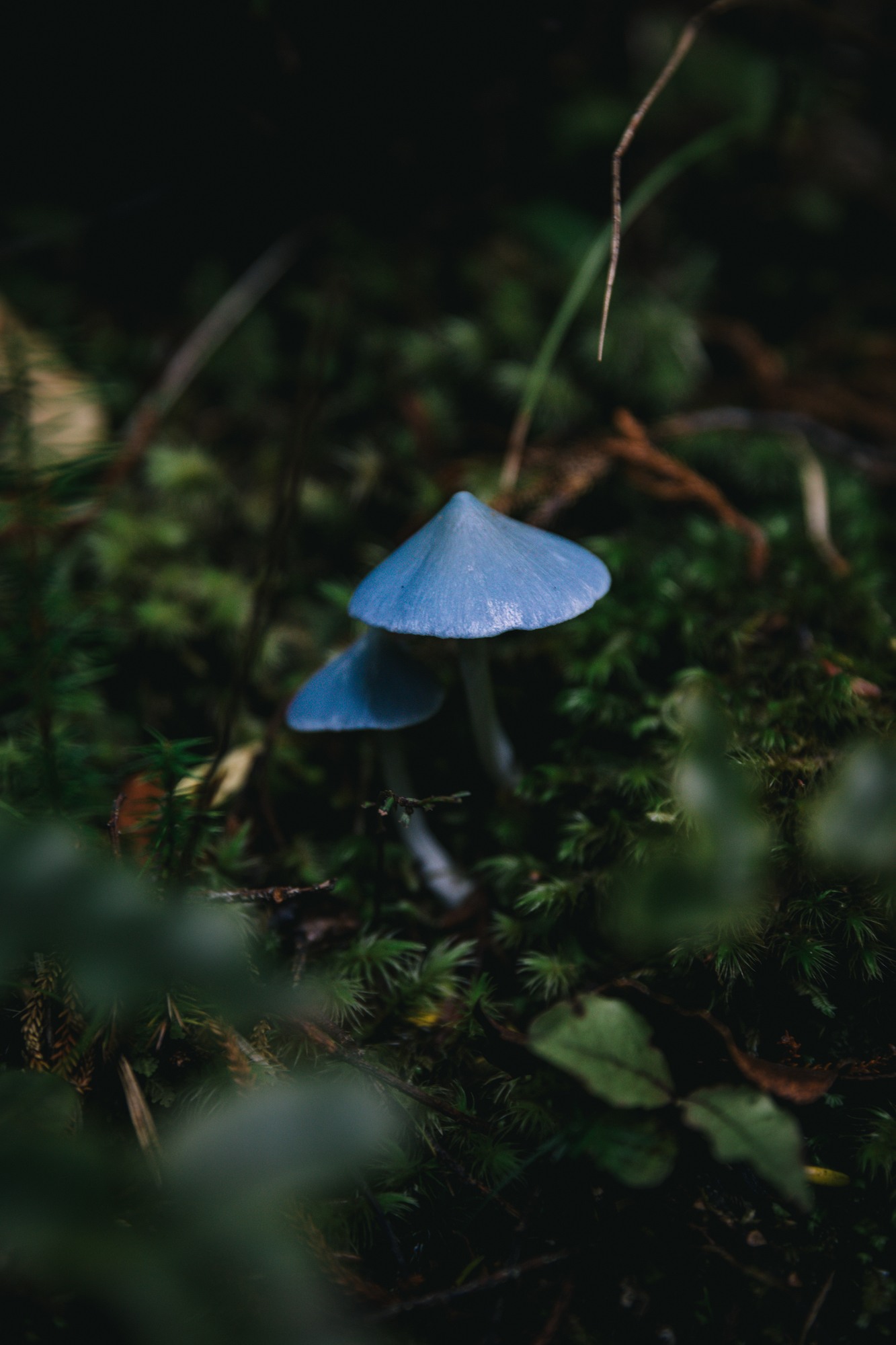
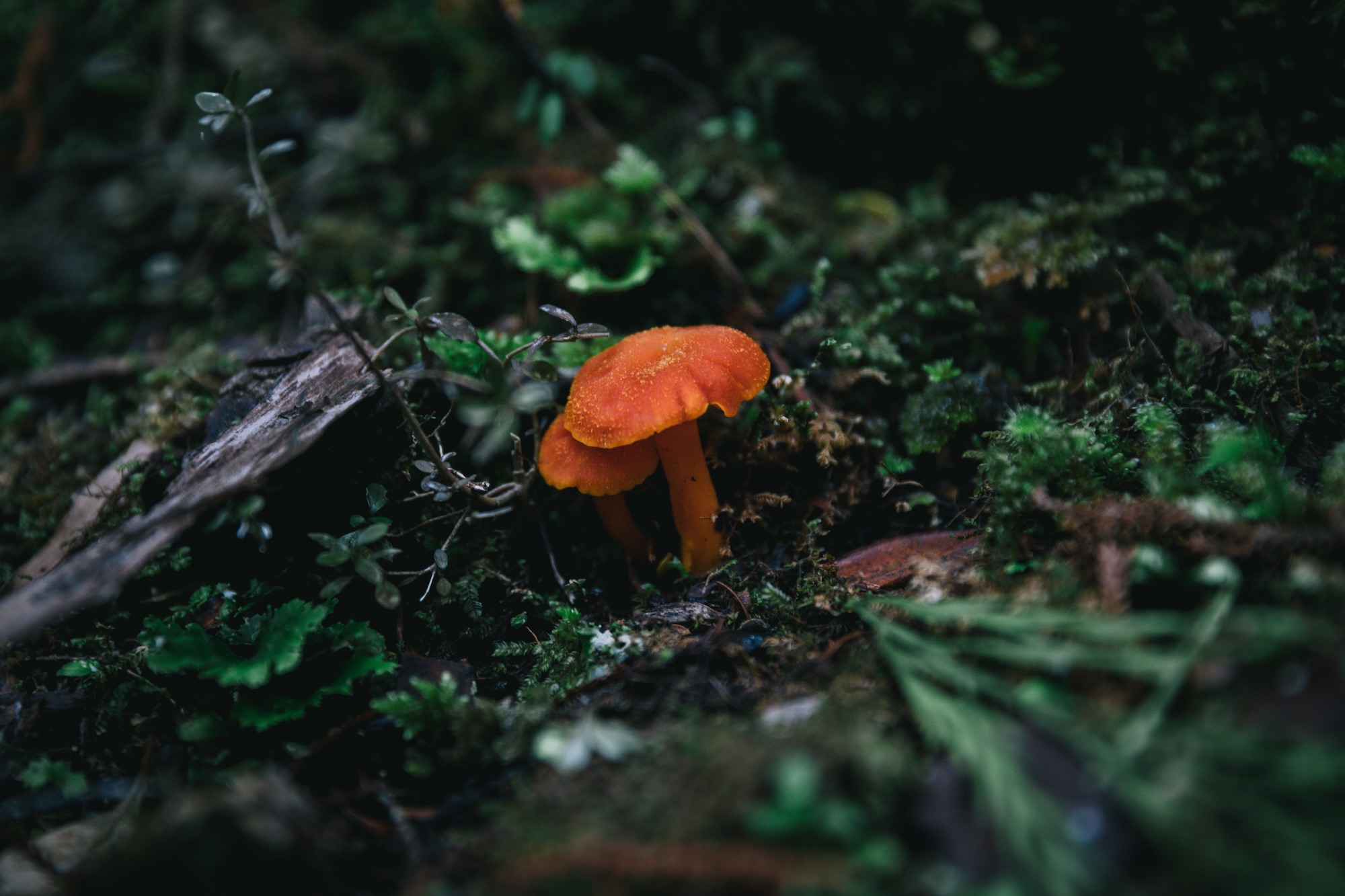
Perhaps the best part of tramping on Stewart Island in April is that the mushrooms begin to appear. As chilly nights become more frequent when autumn descends, the vegetation changes. I was so excited to finally see plenty of the dazzling blue werewere-kōkako, aka Entoloma hochstetteri. The blue of this native mushroom resembles the blue wattle of the North Island kōkako, an endemic songbird here; that’s how it gets its name.
By the end of the trip, we all had muddy knees from kneeling down and examining these crazy mushrooms.
Along with mushrooms and birds, we were stoked to stumble on the lovely Easter orchid several times in full bloom. Earina autumnalis, or raupeka, is an epiphytic orchid that smells like vanilla, often growing in the nooks of trees.
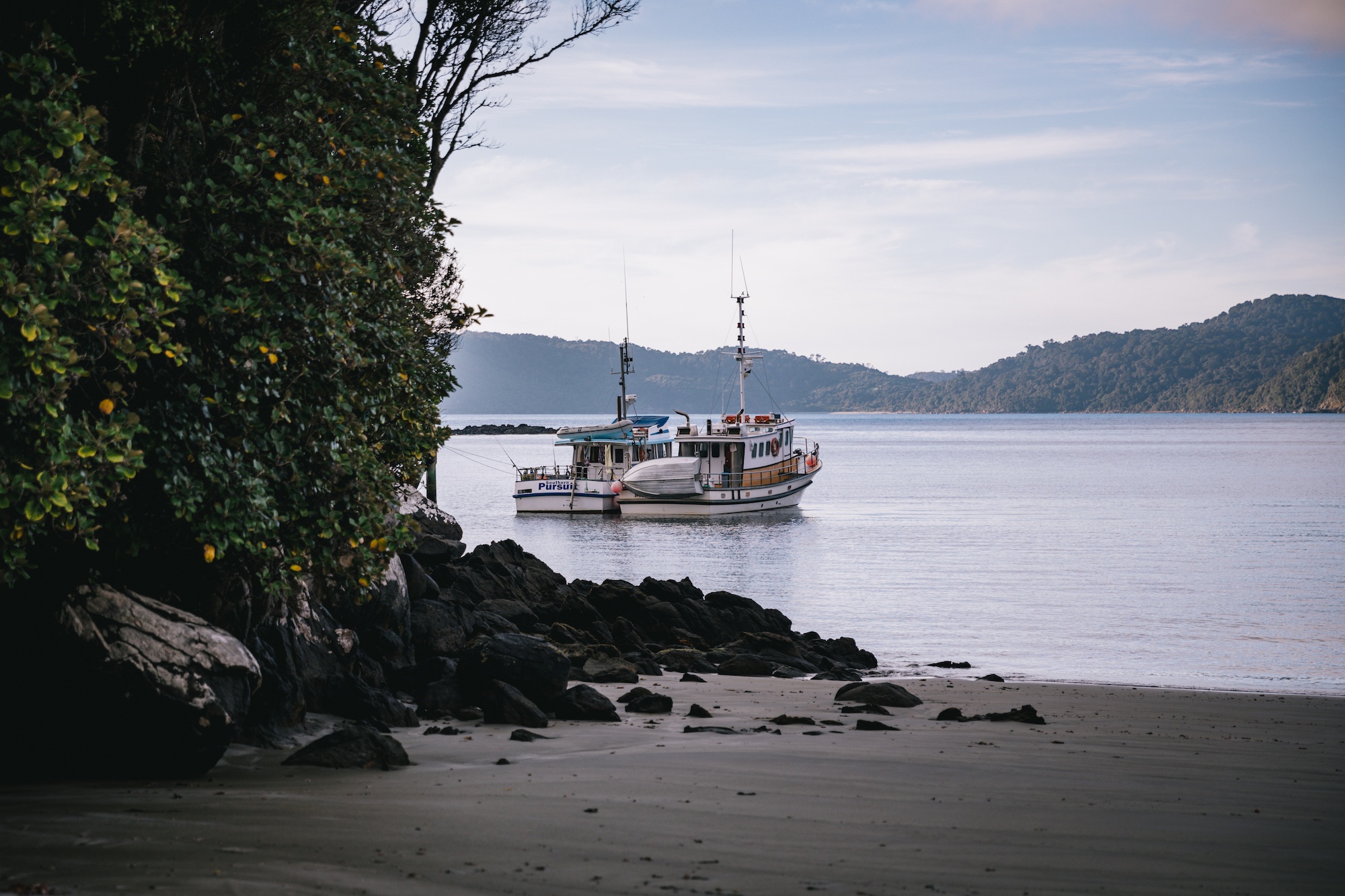
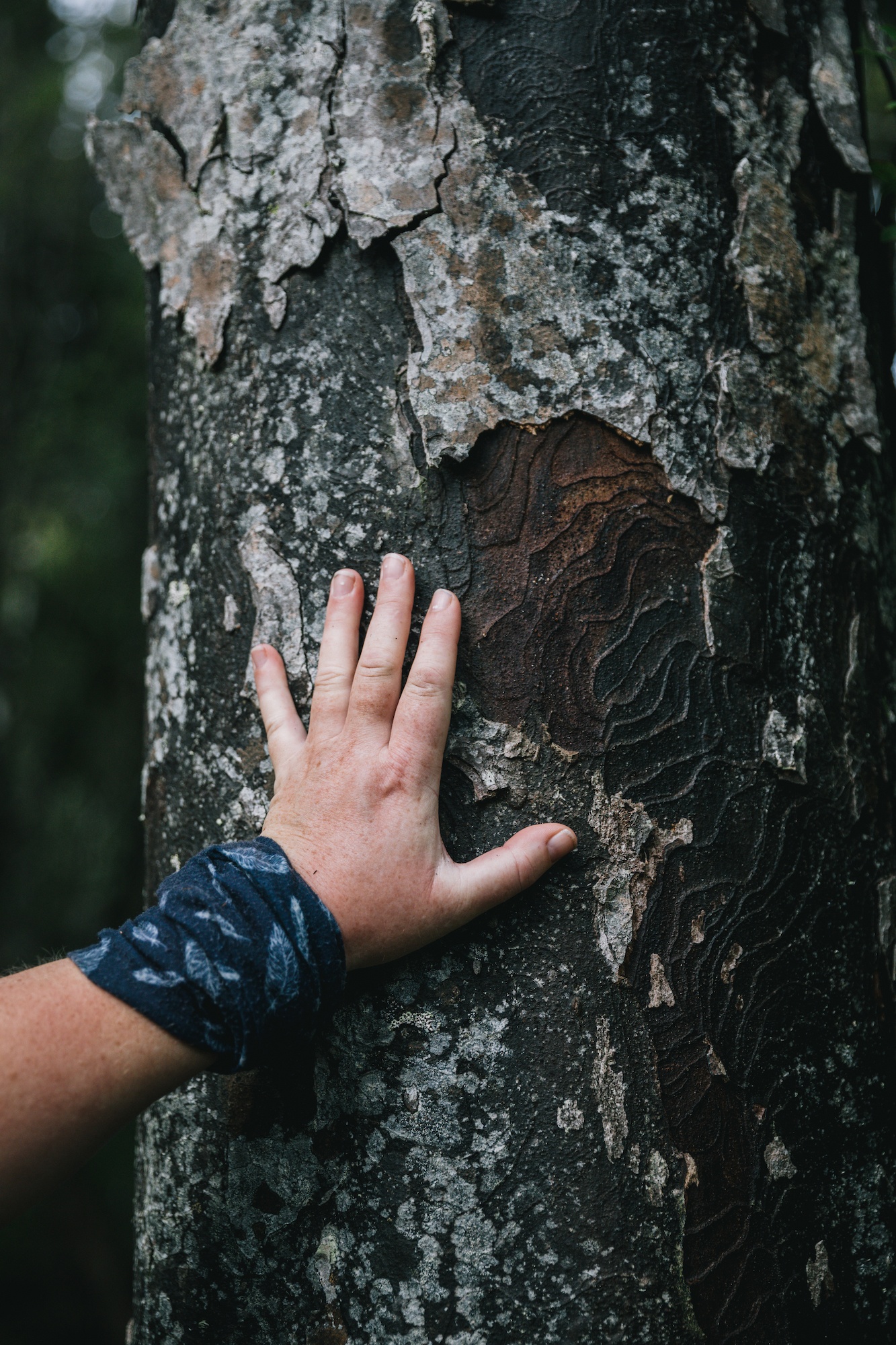
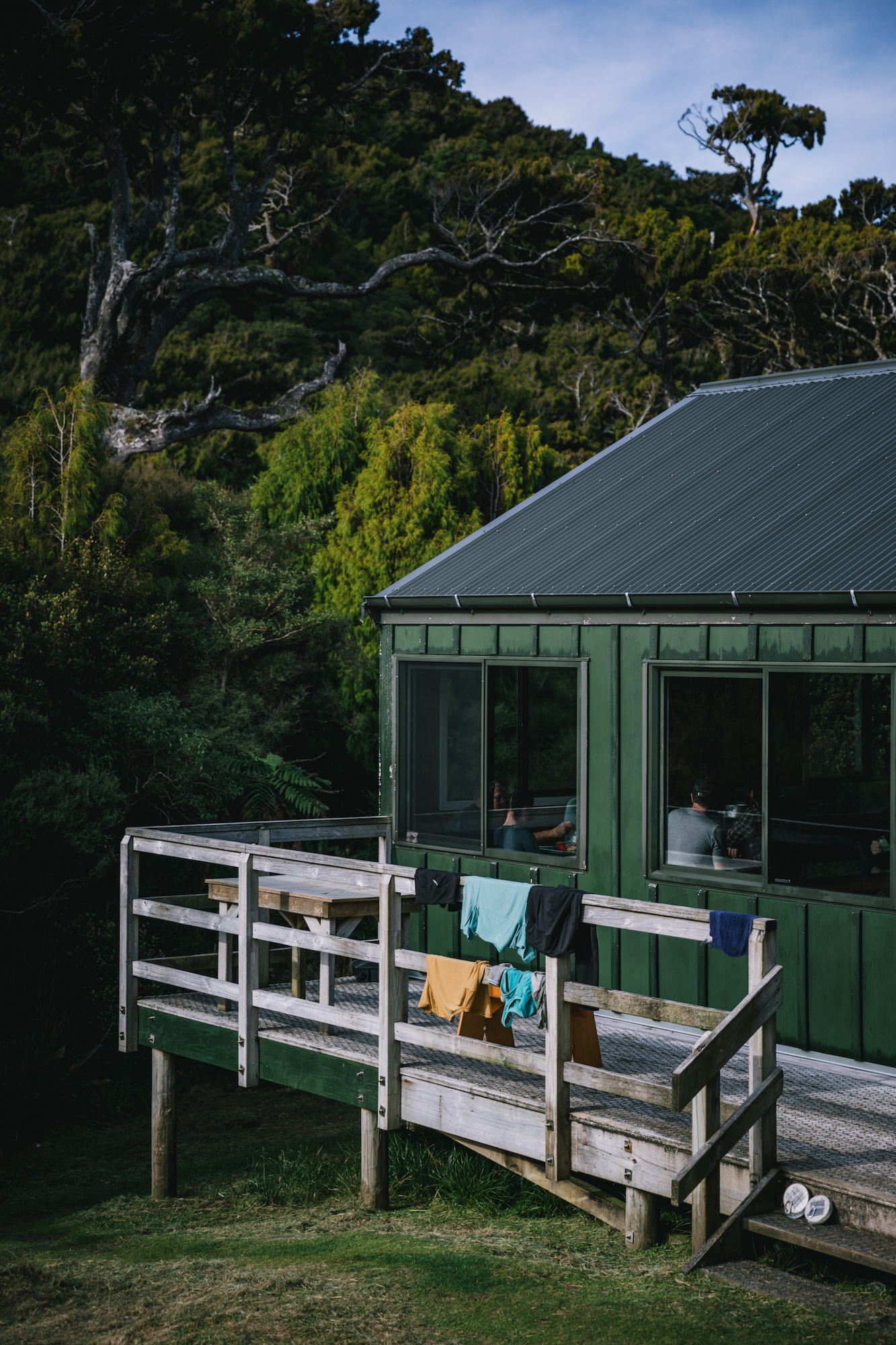
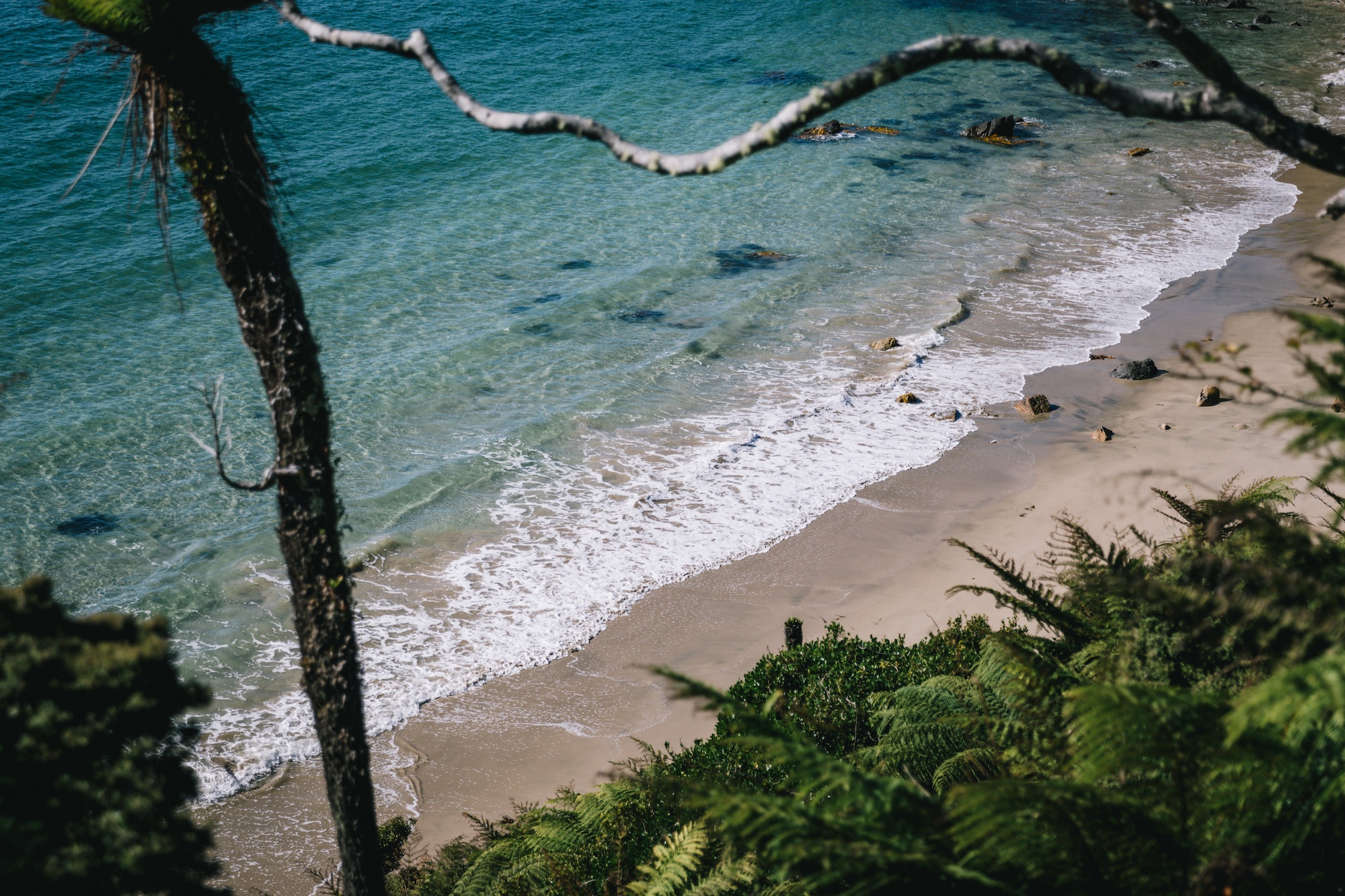
The last day of tramping was around four hours of walking over 11 kilometers. From North Arm Hut, we wandered towards Sawdust Bay and Paterson Inlet beneath ancient rimu and kāmahi trees. You begin to see more and more evidence of old logging and sawmills.
The bush has taken back its land in the century since milling ended here on Stewart Island. It’s hard to believe that hundreds of people would have been working here in its heyday. Only 400 people live on the entirety of Rakiura on a good day today.
Popping out at the Fern Gully Carpark, you can walk another 2 kilometers along one of the few roads on Rakiura into Oban. Or you can ring for a taxi and save your feet.
Have you ever been to Stewart Island? Is this the kind of adventure you’d love to tackle? Spill.
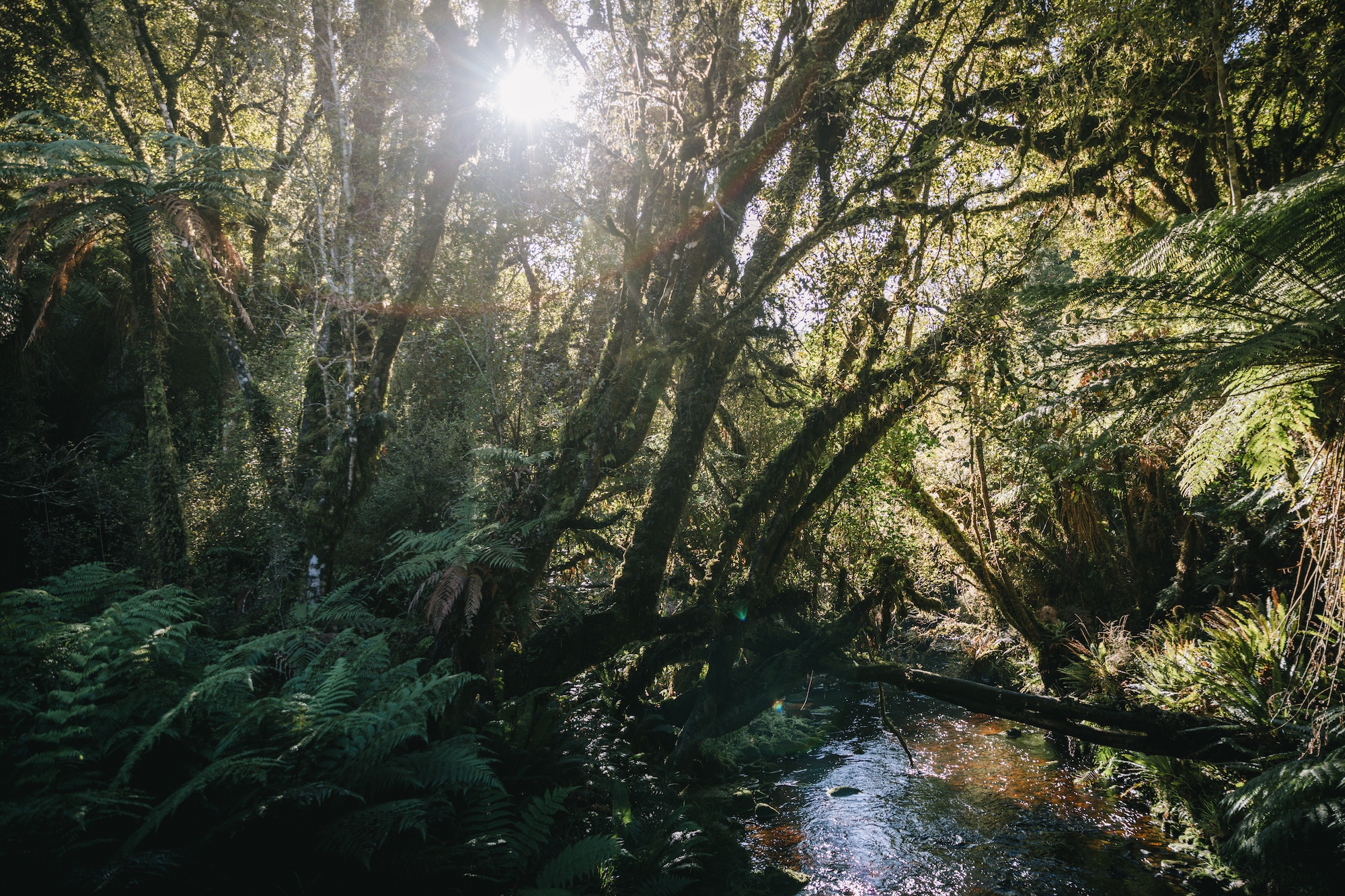
The post Walking the iconic Rakiura Track: New Zealand’s most underrated Great Walk appeared first on Young Adventuress.


